In the early 1970s, the United States Air Force sought a medium transport aircraft capable of short takeoffs and landings. The ambitious goal: carry 27,000 pounds of cargo over 1,000 miles without refueling, using only a 2,000-foot runway. Boeing responded with the YC-14, a prototype that pushed the limits of STOL (Short Takeoff and Landing) technology and advanced aerodynamics.
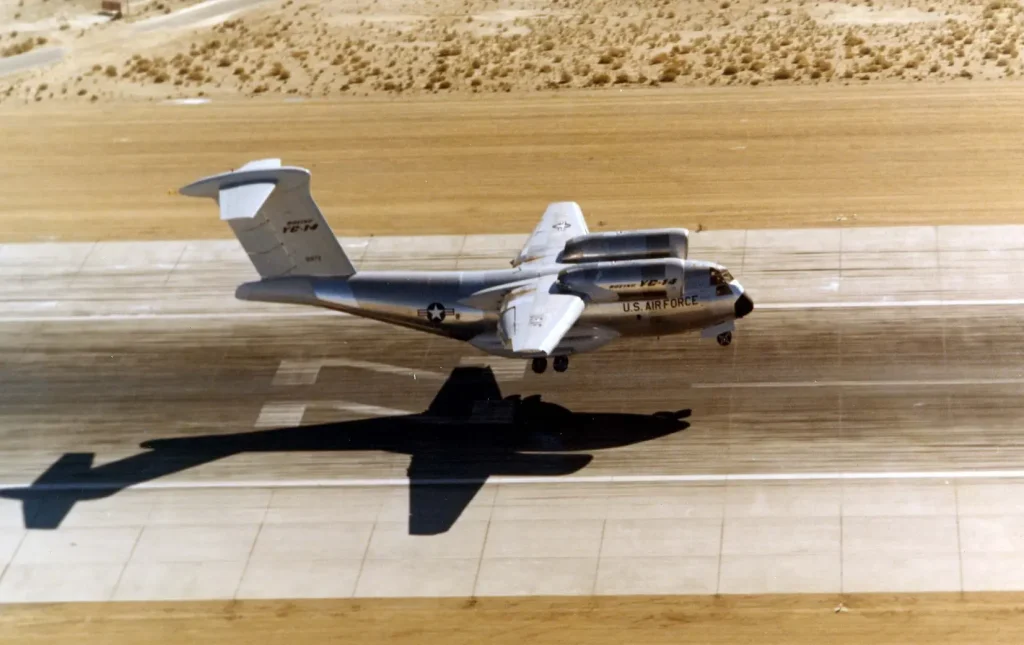
Boeing YC-14 Engine Placement for Maximum Lift
One of the YC-14’s most innovative features was its engine configuration. Boeing mounted the turbofan engines above the wings, allowing exhaust to flow over the wing’s upper surfaces and trailing-edge flaps. Known as upper-surface blowing (USB), this design used the Coandă Effect to increase lift during takeoff and landing, giving the YC-14 exceptional short-field performance.
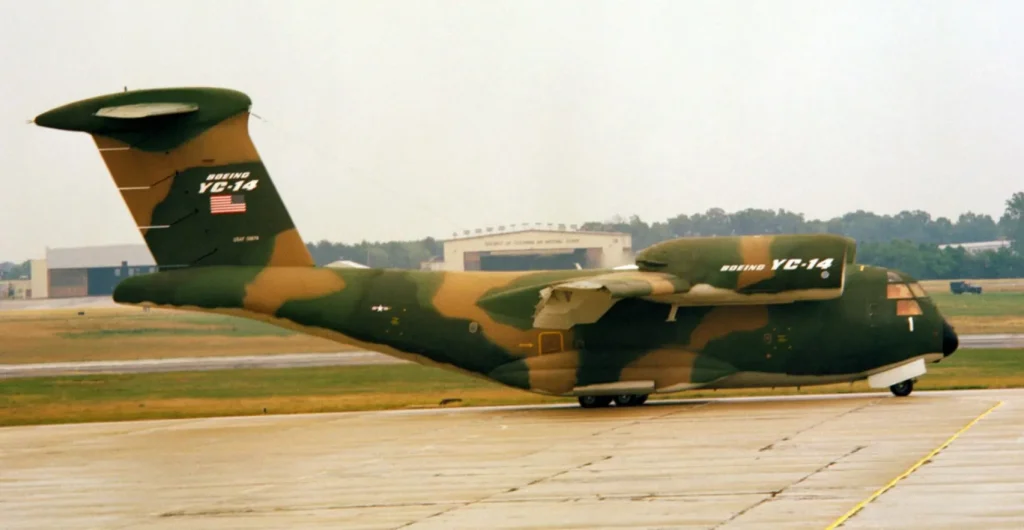
Overcoming Low-Speed Lift Challenges in the YC-14
Despite the innovative design, wind tunnel testing revealed lift challenges at low speeds and altitudes. Boeing installed retractable vortex generators behind the engine exhausts to maintain flap efficiency and redesigned the tail for better stability. These changes allowed the YC-14 to remain controllable and safe during STOL operations, even under demanding conditions.
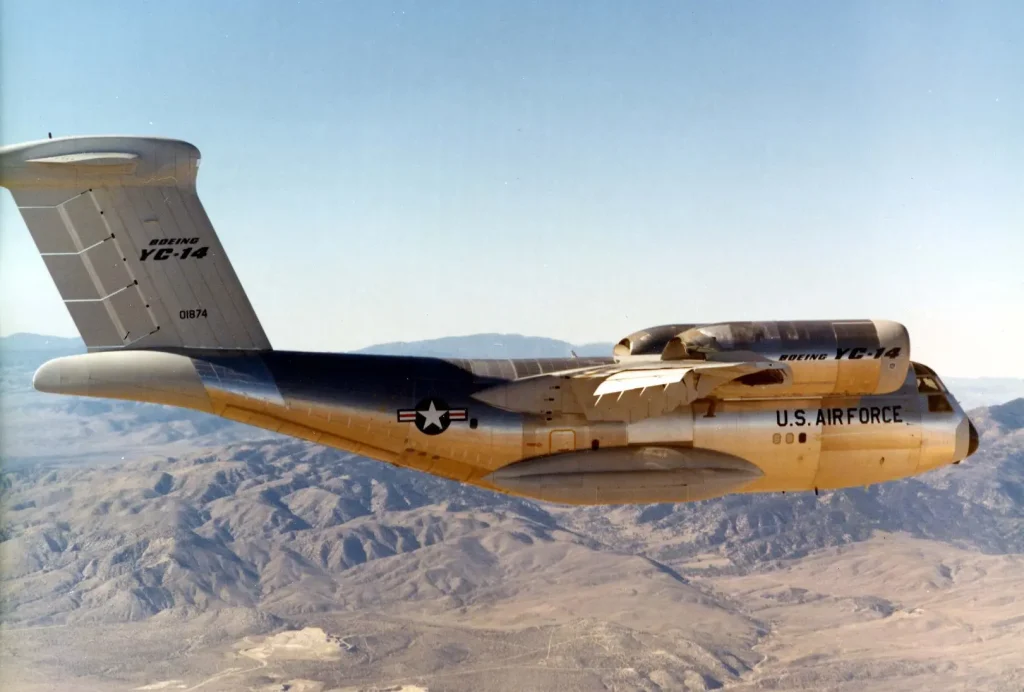
YC-14 Maiden Flight and Flight Performance
The YC-14 first flew on August 9, 1976, nearly a year after the McDonnell Douglas YC-15. Test flights at Edwards Air Force Base showed it could operate between 59 knots and 520 knots at 38,000 feet. Pilots praised its handling, noting its surprisingly agile performance for a large aircraft. These flights confirmed the success of Boeing’s USB engine configuration.
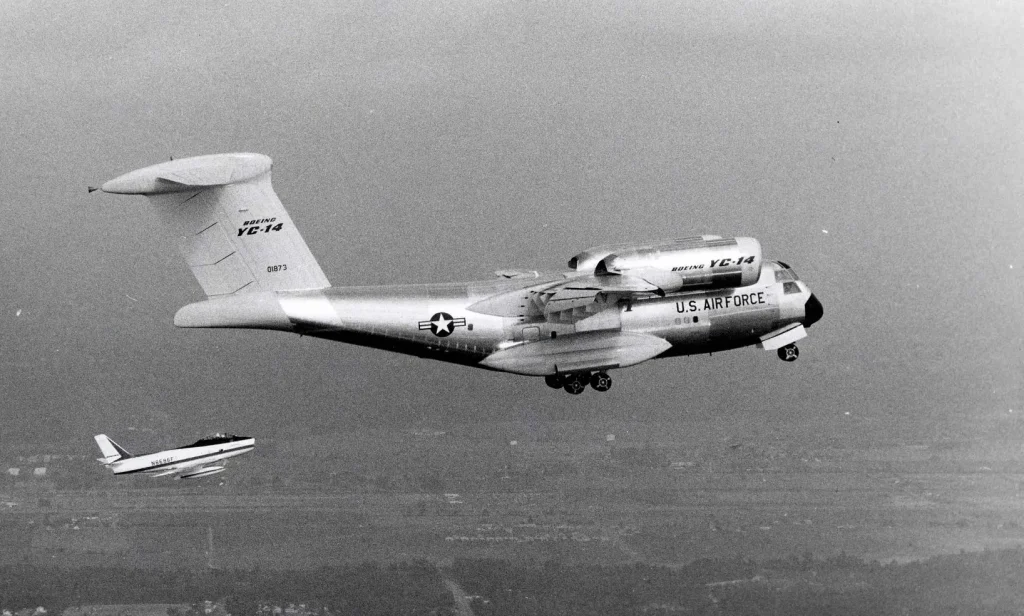
YC-14 Payload Capacity and Heavy Lift Capability
The YC-14 could lift extraordinary loads, including a fully loaded 55-ton M-60 Patton tank. Powered by two General Electric CF6-50D turbofans delivering 51,000 pounds of thrust each, the aircraft demonstrated the practical advantages of combining USB engines with a supercritical wing, establishing it as a formidable STOL transport prototype.
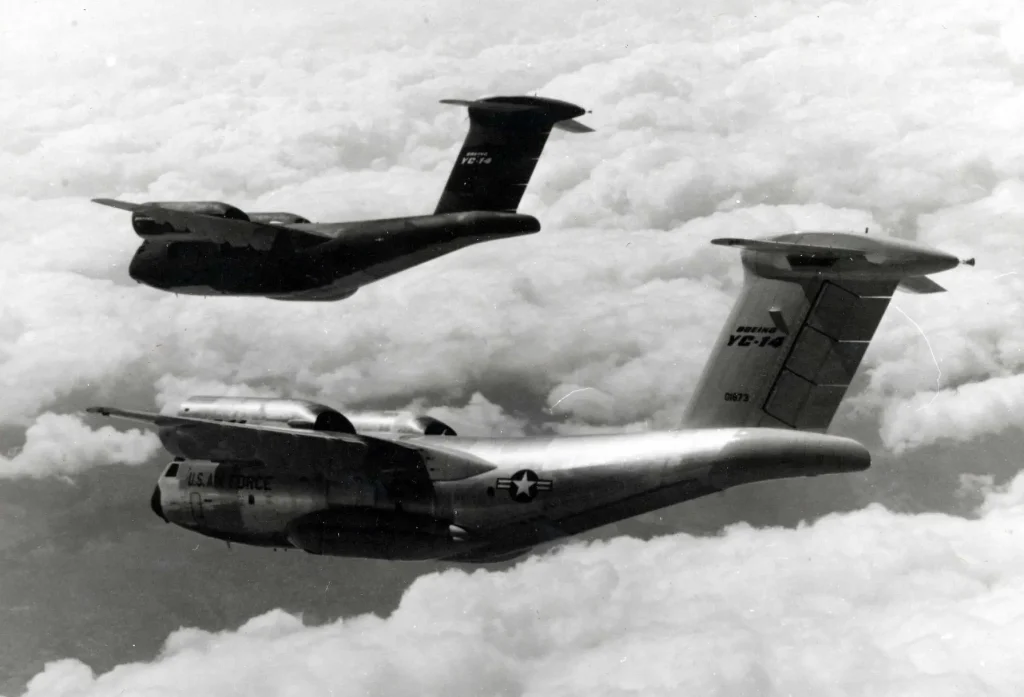
Why the YC-14 Program Was Cancelled
Despite its impressive capabilities, the YC-14 never entered production. Shifting priorities within the USAF led to the cancellation of both the YC-14 and YC-15 programs. However, lessons learned from these prototypes contributed directly to the development of the Boeing C-17 Globemaster III, a highly successful strategic airlifter still in service today.
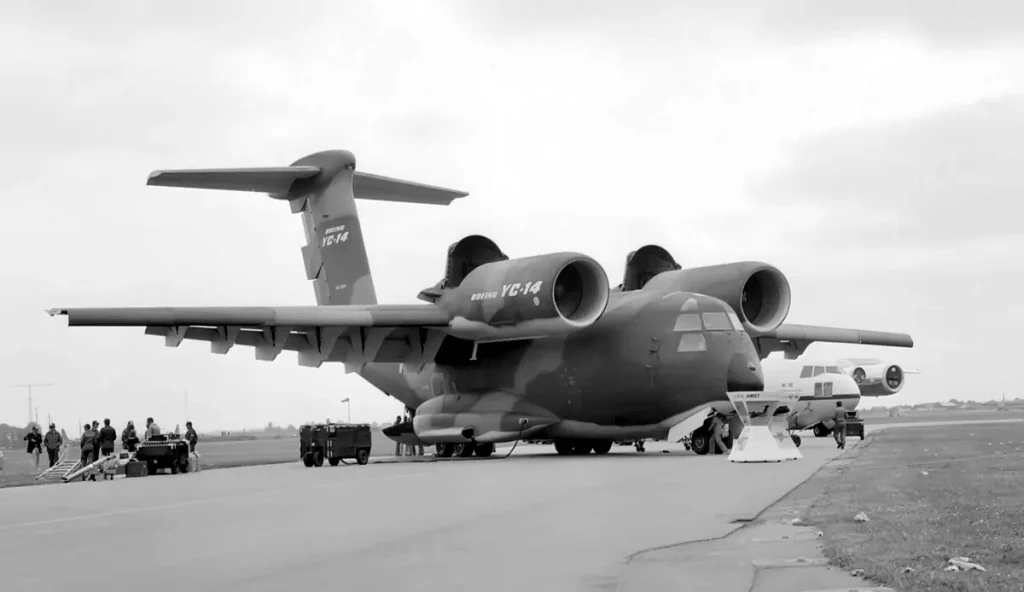
Where to See the Boeing YC-14 Today
Today, one YC-14 is preserved at the AMARG boneyard at Davis-Monthan Air Force Base in Arizona, while the other is on display at the Pima Air and Space Museum. Although it never reached production, the YC-14 remains an important milestone in STOL research and aircraft design innovation.
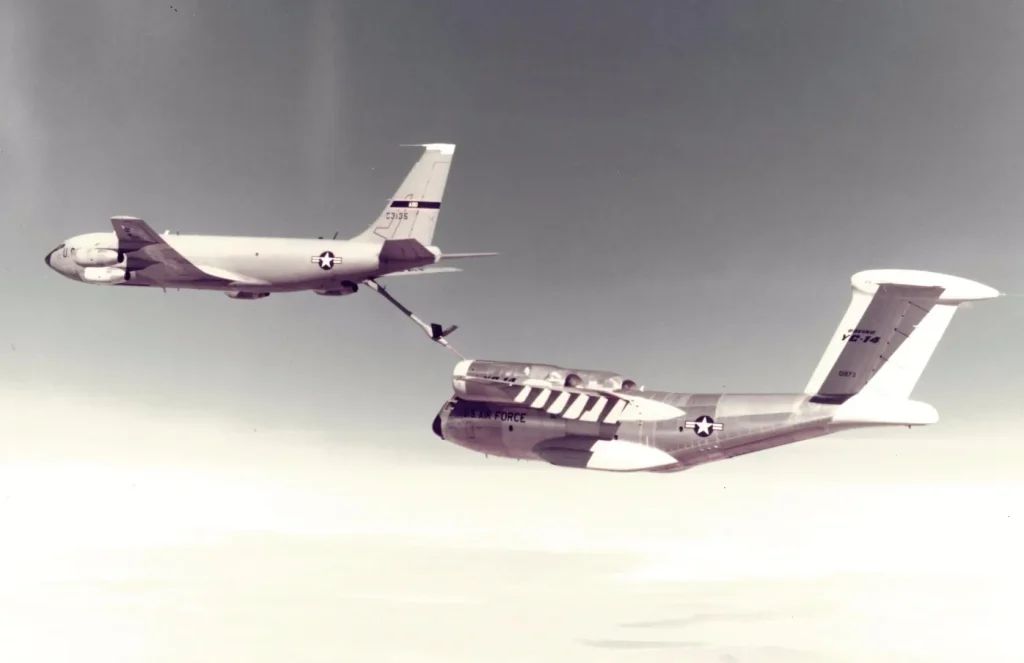
The Boeing YC-14 exemplifies how prototype aircraft, even those that never enter production, can leave a lasting legacy. Through innovative engineering and NASA collaboration, Boeing created a STOL airlifter ahead of its time, influencing future generations of transport aircraft.







